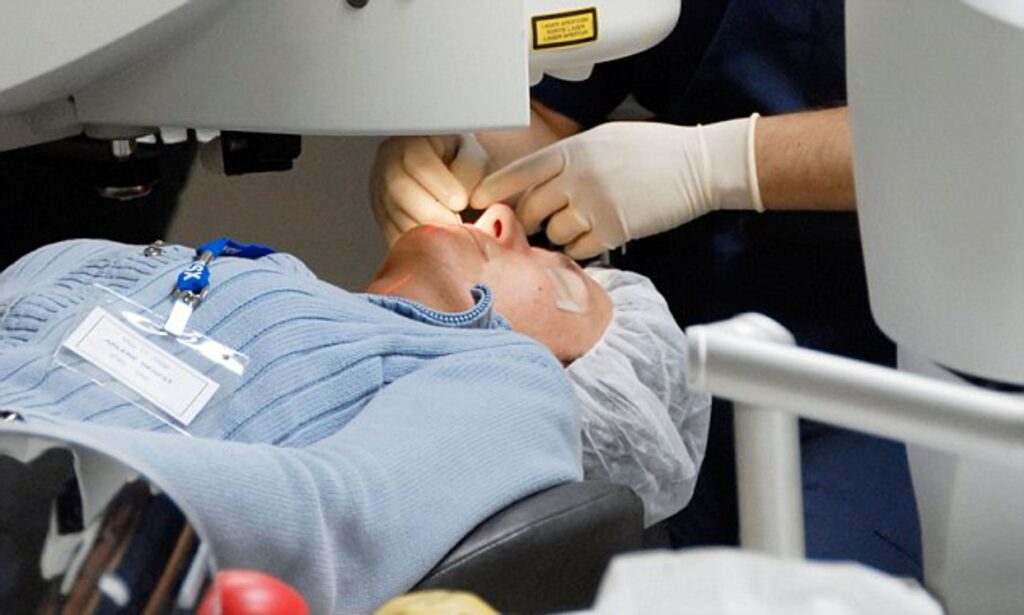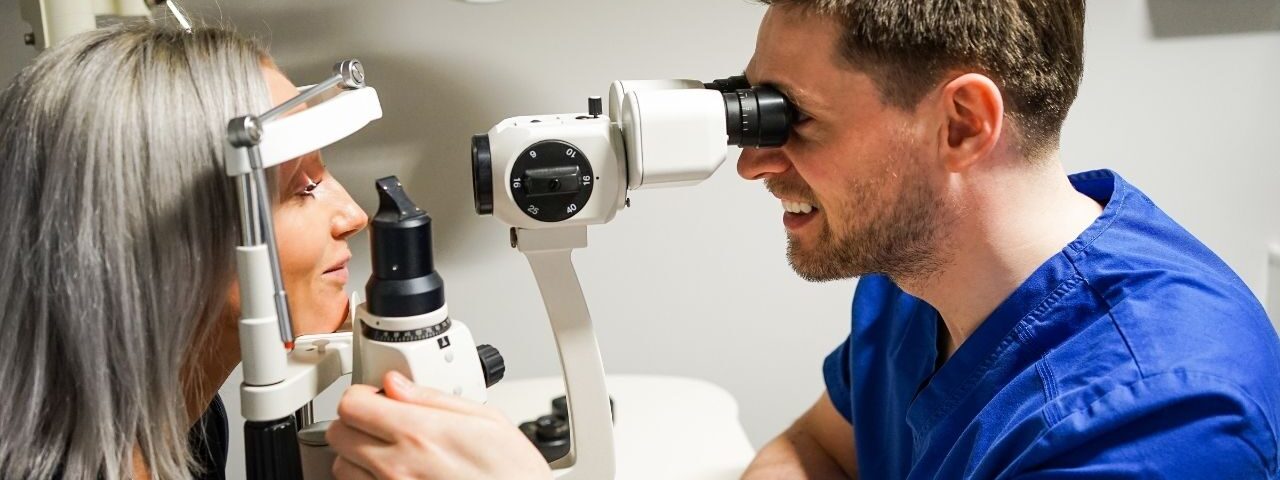Cataracts also known as “presbyopia”, or “aging eyes” is a condition brought about by the hardening, discoloration, and cloudiness of the lens in the eye. The effect this condition has on the eye does not happen out of the blue. It starts with a blurry vision which is caused by discoloration of the lens, then followed by cloudiness which reduces the amount of light that enters the retina, thus Impairing vision, and in some cases, it can be so bad that glasses won’t help. You might be wondering at this point ‘does having a cataract mean the end of the road for my eyes? Is there a cure?’ well say no more, cause the answers to your questions are in this article. So let’s carry on! Read more about COVID-19 test myths you shouldn’t believe by visiting http://puritypeptidelabs.com/covid-19-test-myths-you-shouldnt-believe/
Myths surrounding cataract and cataract eye surgery
There are lots of misconceptions about cataracts and cataract eye surgery, Most of which are very misleading. In this article, we will be discussing seven major myths about cataracts and cataract surgery.
Myth #1: Cataract is restricted to old age
Fact: yes, cataracts can be a result of aging, but it is not something that exclusively happens to old people. There are different causes of cataracts ranging from; long-term use of steroids, diabetes, radiation therapy, trauma, and smoking, to exposure to ultraviolet radiation, or it can even be hereditary (This is also known as congenital cataract which is very rare). With this, it is safe to conclude that cataract is something that can happen to any age group. Click here for common causes of cataracts among children and adults.

Myth #2: cataracts can be cured by doing yoga, eating certain diets, doing eye exercises, and eye drops.
Fact: it is safe to say that none of the things listed above in the myth is true. While having a healthy lifestyle can help slow down the process of cataract progression, it does not serve as a cure. Cataract eye surgery is the only way of getting rid of cataracts.
Myth #3: Cataract eye surgery can only be performed when it is fully matured/should be performed immediately after diagnosis.
Fact: please debunk both myths, the level of technological advancement we have in the modern world today can permit you to have the surgery at your convenience, especially when it starts to interfere with your daily life. That means you don’t have to wait until it fully matures before the surgery, and you don’t have to do the surgery immediately without properly exploring your options first.
Myth #4: The period of recovery after cataract eye surgery is very long.
Fact: the myth exaggerates The recovery period for cataract eye surgery. Soreness or discomfort should alleviate within a few days after the surgery, and full recovery can be within four to six weeks (no heavy lifting or stress during the recovery period) post-surgery ( depending on the nature and size of the cataract, and your body’s ability to heal). Following your doctor’s instructions post-surgery and keeping up with appointments is very important.
Myth #5: Cataracts can regrow after surgery.
Fact: it is imperative to note that cataract is not good. At the beginning of this article, we talked about how cataract is brought about by the hardening, discoloration, and cloudiness of the lens in the eye. The procedure is essentially based on the removal of the lens from the eye. As such, there is no remission after its removed, except in cases where little parts of the membrane are left behind. Other than this, cataracts don’t reoccur after surgery.
Myth #6: cataract surgery is high-risk surgery.
Fact: cataract surgery ranks one of the safest surgical procedures worldwide today, with an estimated success rate of 98%. It is an outpatient surgery.
Myth #7: There is a standard lens for all patients that undergo cataract surgery.
Fact: just like there are different lens types for every other side defect (for each category), There are also different lens types used during cataract surgery with varying material, size, and power. It all depends on the patient, and his or her need.
Cataract surgery procedure
Cataract surgery is normally done as an outpatient procedure (i.e. the patient doesn’t need to stay overnight in the hospital after surgery) with the use of ultrasound technology. Usually, it does not require anesthesia so in its place local anesthetics are used to numb the eye, and a sedative is administered to relieve anxiety during the operation.
During the surgery, the surgeon makes a micro-incision (about 3 millimeters wide) at the edge of the cornea And removes the cloudy lens (cataracts) with an ultrasound technique called “phacoemulsification”, which involves the use of a clear gel called a viscoelastic agent which protects the cornea from ultrasound energy and keeps the eye under pressure during surgery.
The surgeon then proceeds to use sound waves produced by an ultrasonic device to break down the lens before removing it through the incision. Next, is the installation of an artificial lens implant also known as an intraocular lens (LOL). At this stage the surgeon will be required to insert more protective gel (i.e. viscoelastic agent) to the eye, fold, and slip the implant through the incision. The artificial lens opens up to fill the space where the old lens used to be. The surgeon then removes the protective gel (after implantation has taken place) and if necessary closes the incision with a stitch.

Risk of cataract surgery
Although cataract surgery is recorded to have a 98% success rate, it is not totally risk-free. The few times complications occur, it can be in form of swelling, inflammation, infection, drooping eyelid, dislocation of artificial lens, glaucoma, secondary cataract, and loss of vision.
Risks of complication after surgery is relatively higher for people with other high diseases or serious medical condition.
What to expect before, during, and after a cataract surgery
Cataract surgery is a quick procedure that at most require less than an hour to finish. But lots of preparation and considerations would have to be taken concerning your eye before surgery day. Your surgeon will give you a list of instructions to follow before your surgery. It would most likely include the following;
- Get a pre-op medical clearance (this is to confirm you are good to go for surgery)
- Schedule a pre-operative assessment (this is done with your surgeon he or she will be measuring your eye to determine the strength of the artificial lens you will be needing)
- Stop wearing contact lens
- Start using eye drops.
During surgery
- You will be taken to the operating room and possibly have an Ivy line placed in your arm
- There will be eye drops placed in your eye multiple times to dilate your pupil which will make it easier for your surgeon to get a clearer view of the insides of your eye. It could take up to 20 to 30 minutes for your eye to dilate enough for surgery
- Half of the time spent in the operating room will most likely be spent on cleaning the area around your eye and dripping your upper body. This is to avoid bacteria that could cause infection.
- A sphygmomanometer cuff will be placed on one of your arms to monitor your blood pressure during the surgery.
- To numb your eye for the procedure, your surgeon will either give you an injection of numbing anesthetic or topical anesthetic which does not involve needles.
- After this is done, your surgeon will begin the procedure. Try not to move your head or look around during the procedure to make your surgical experience smoother.
- At the end of the procedure, an eye shield will be placed over your eye by your surgeon. You will be required to wear it for 24 hours post-surgery and during sleeping or napping for a week after the surgery.
- Next, you will then be taken to a recovery area where you can rest for two to four hours so that the sedation can wear off before you leave the hospital.
After the procedure
- You might be prescribed more eye drops. This is to prevent infection and inflammation.
- You should not experience serious pain. If this happens reach out to your doctor.
- Do not itch your eye after surgery
- You have to stay away from heavy lifting after your surgery
- Make sure to follow your doctor’s instructions and follow up on every appointment given to you after your surgery. Next thing it would take four to six weeks for full recovery, although it can vary depending on the severity of the cataract removed and the difference in body capacity to heal.
- A visit to your optician is necessary for new glasses or contact lenses after surgery.
Conclusion
Cataract surgery although a delicate surgery is one of the safest surgical procedures. While this is said, it is necessary to look for a certified hospital or surgeon to handle your surgery. Ask questions in areas you are confused about or want to know more about when you visit your doctor or surgeon.

